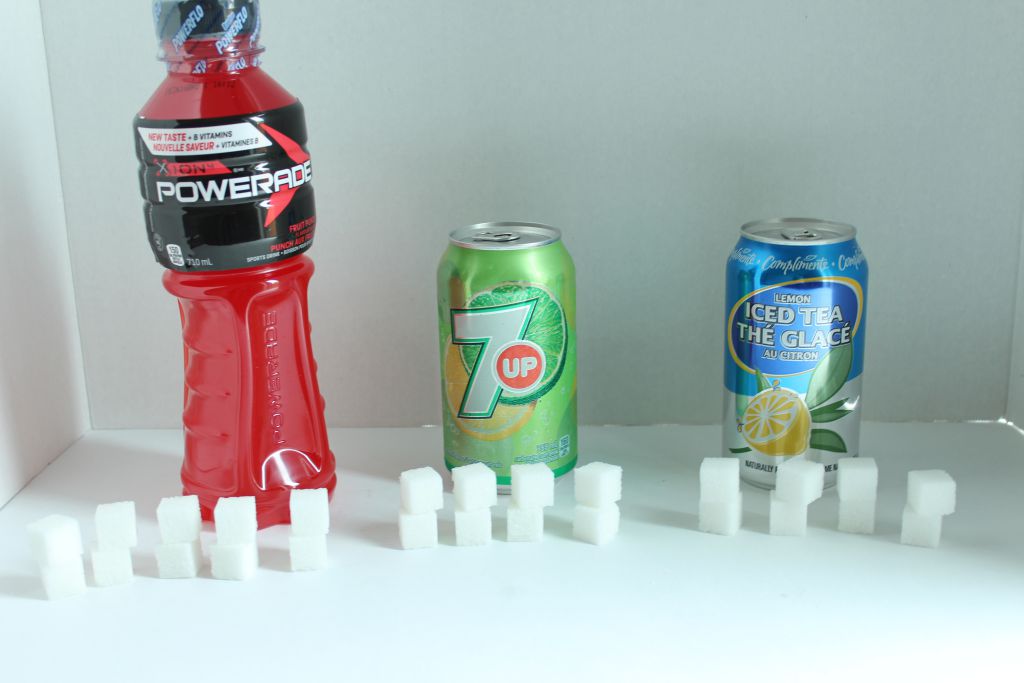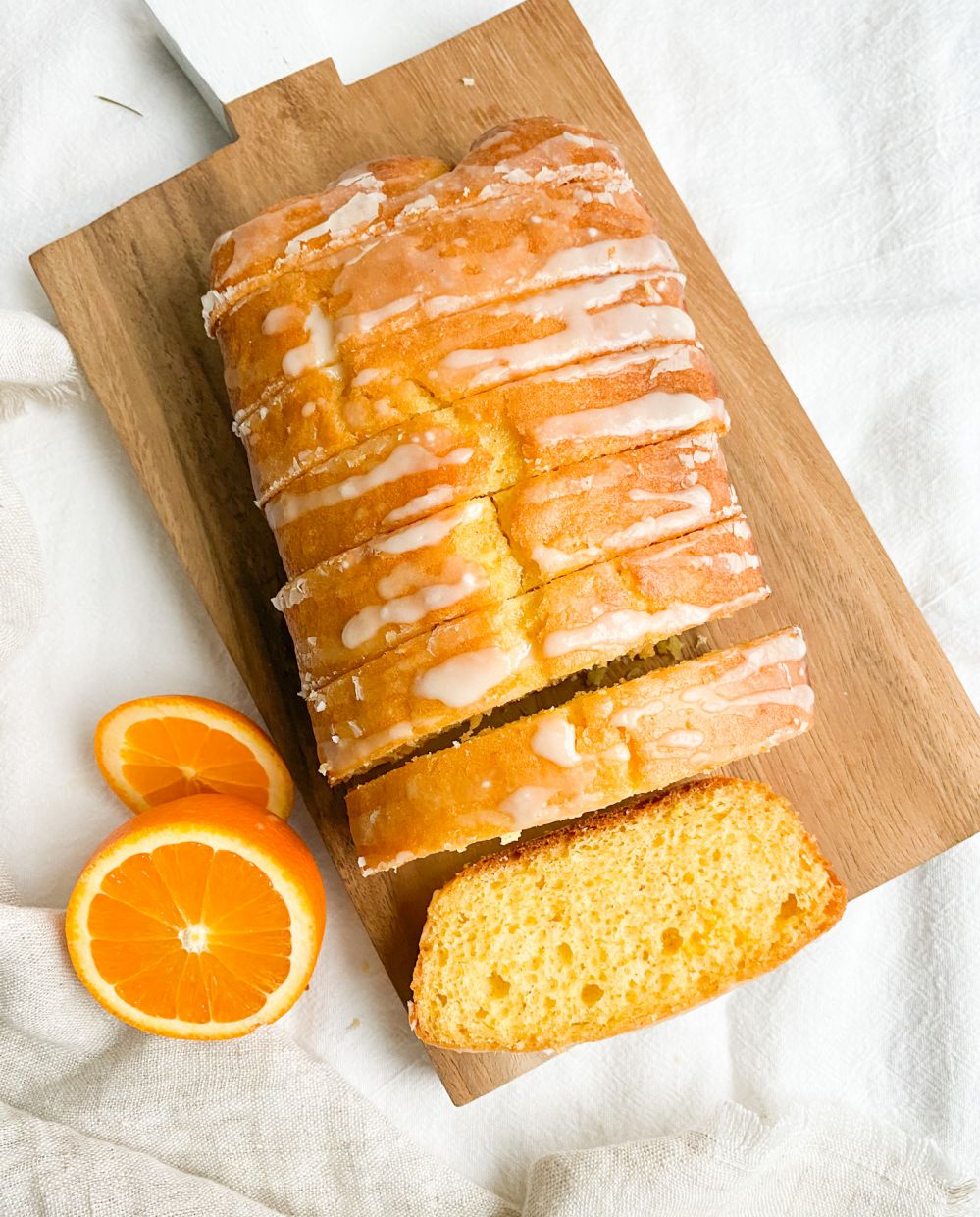Sugar has been getting a lot of attention lately, not necessarily good. Media have referred to it as being “toxic”. Sending some into a frenzy. First things first, I don’t think sugar is “toxic” nor do I believe that its realistic to eliminate it from our diet. Am I concerned about sugar? Absolutely. Research has linked high sugar consumption to the development of chronic diseases such as obesity, diabetes, and heart disease. Furthermore, sugary foods increases your little ones risk of dental caries. Most kids (and adults) love sugar. Research suggests we are eating to much added sugar. While it may be obvious in some foods like ice cream, chocolate bars, 0r cakes, the truth is its found in a lot of foods you would never think of as being high in sugar. We often forget to look at all the different beverages we consume. Most beverages, other than water, provide little nutritional value and displace healthy foods. With the warmer weather, I thought this would be a great time to see how much sugar kids are drinking.
While D and I for the most part are on the same page when it comes to feeding our daughters, I know they are going to be exposed to sugary foods whether it’s a playdate, school, or daycare, its unavoidable. Navigating our current food system can be daunting for myself never mind the general public. As parents we play an important role in shaping our kids eating habits.
What is the recommended daily sugar intake
While there is no recommended daily value for sugar, the World Health Organization (WHO) suggests no more than 10 percent of total calories coming from added sugar. Added sugar means sugar that has been added to foods like ice cream, cake, cookies, pastries, muffins and soda’s. This recommendation does not apply to sugar that is naturally present in foods such as fruits (fructose) and unsweetened dairy products (lactose). Let’s take a closer look at what 10 % looks like:
1 tsp of sugar (1 cube) = 4 grams
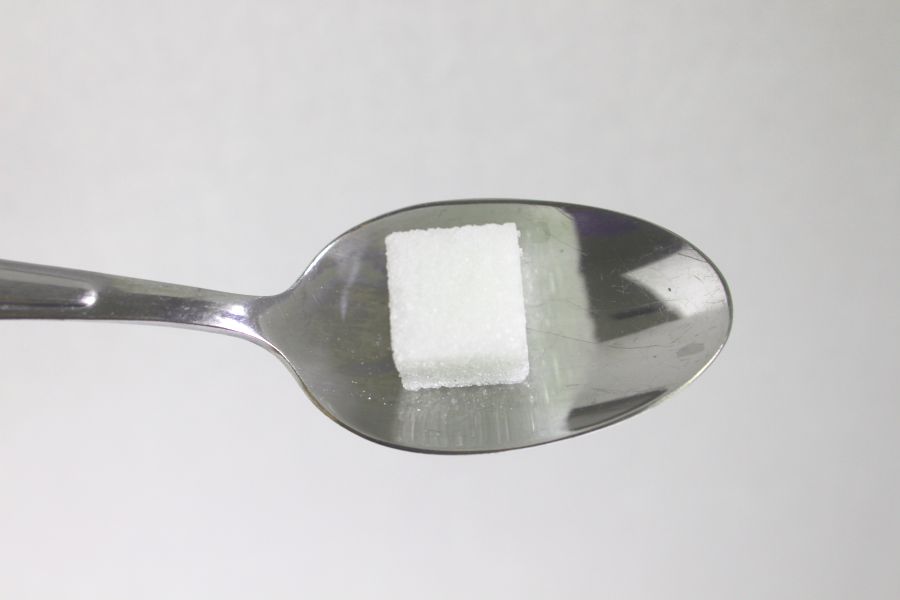
Age recommended sugar intake (tsp or cubes)/ day
Boys Girls
2-3 years 6 6
4-8 years 11 10
9-13 years 14 13
14-18 years 20 15
How much added sugar is in popular beverages:
Beverage Sugar
1 can of soda (355mL) 8 tsp (32 grams)
I can of ice tea (355mL) 8 tsp ( 33 grams)
Powerade ( 710mL) 10 tsp (40 grams)
Sunny D ( 295mL) 4 tsp ( 17 grams)
Chocolate milk (250mL) 3 tsp (12 grams added sugars)
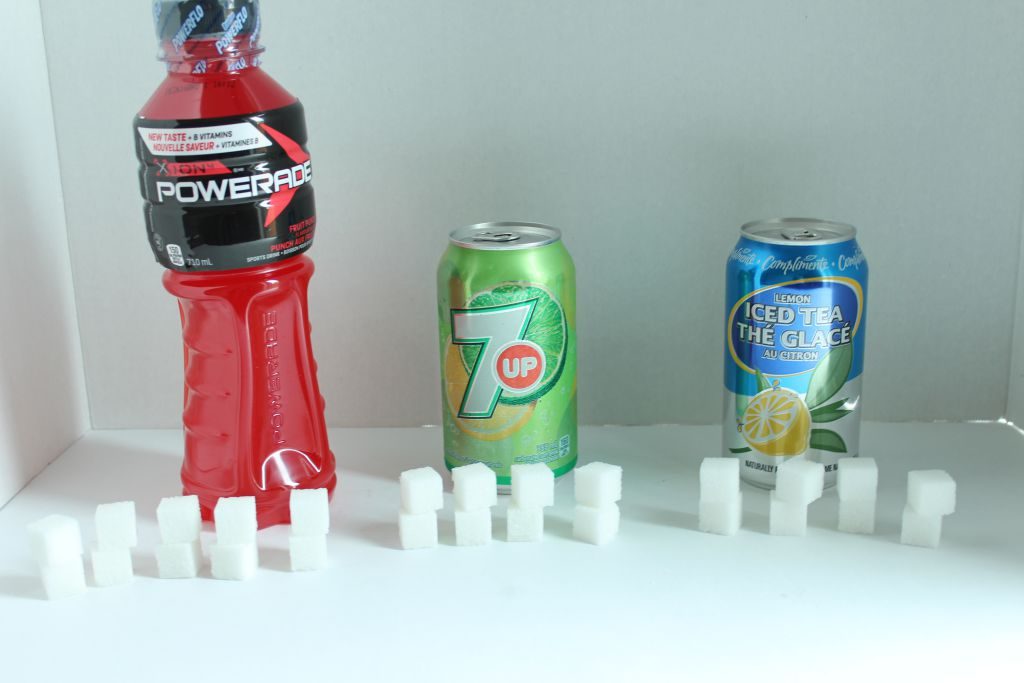
What about juice? Is it ok to give my kids juice?
Yes. Fruit juice that is labelled “100% fruit juice” or unsweetened juice is a better option but limit your child’s portion size to 1/2 cup per day. Fruit beverages that are labelled as “contains fruit juice” “fruit cocktail” or “fruit punch” contain very little fruit and most of the flavouring comes from added sugar. A glass of water with a piece of fresh fruit is the best choice. Fruit juice that is 100% is a concentrated source of natural sugars and contains acid, when consumed in excess may lead to dental caries.
 5 Tips to reduce your kids sugar intake:
5 Tips to reduce your kids sugar intake:
1). Drink water
We often forget how much added sugar beverages such as sodas contribute to our overall daily intake. Water is the best choice when it comes to hydration. A lot of sugary beverages provide very little if any nutritional value and one beverage can exceeds your child’s recommended daily sugar intake.
2). Serve more fruits and vegetables
Instead of packaged foods that have a lot of added refined sugars offer fresh fruits and vegetables that are nutrient packed with fiber, antioxidants, vitamins and minerals. Serve fruit and vegetables at every meal. Who wouldn’t love a bowl of fresh raspberries in the summer months.
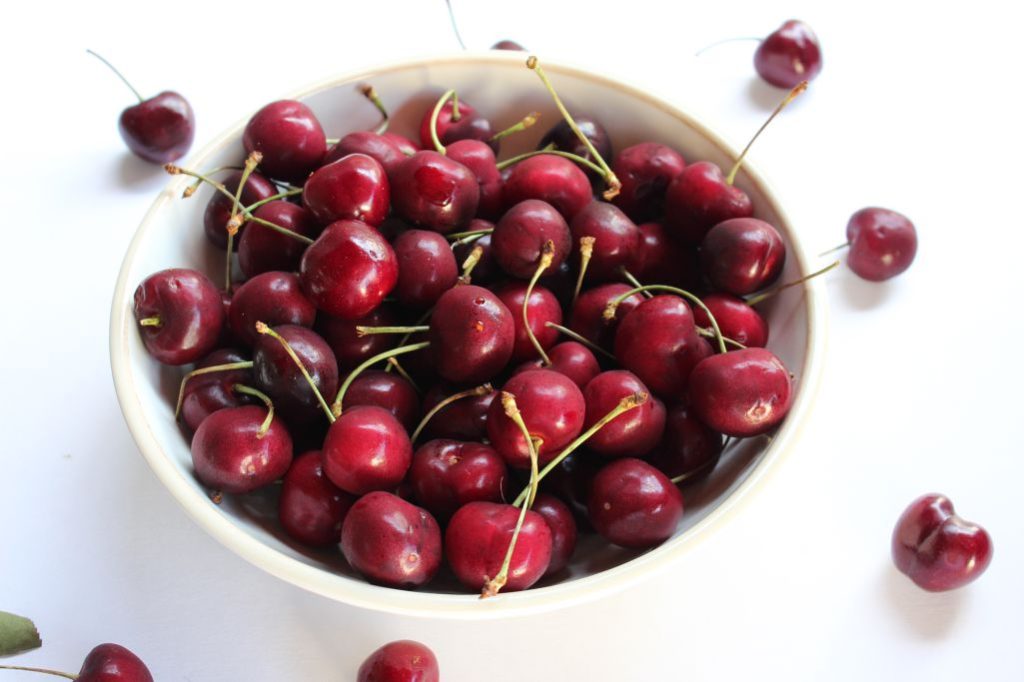
3). Cook more
Preparing homemade food allows you the parent to control the ingredients like sugar. Many convenient and restaurant foods geared towards kids may seem healthy but are full of sugar, salt, and artificial ingredients.
4). Role model
We play an important role in shaping our kids relationship with food. Model good behaviours like lots of drinking water, snacking on fresh fruit and vegetables. At the same time its important to know your role, you decide what is being served and when. Let your child decide what to eat and how much.
5). Read labels & ingredient lists
Currently, there is no percent daily value for sugar. Health Canada is reviewing its guidelines and nutrition labels will be getting an overhaul. Until the new labelling requirements come into effect you can still get a lot of information about sugar by looking at the label and ingredient list. Let’s take a look.
The grams of sugar on the current labels gives the TOTAL amount of sugar in a product – That is both the added sugars and naturally occurring sugars such as those found in fruit( fructose) and unsweetened milk products (lactose). Remember to first look at the portion size on the label.
I also recommend reading the ingredient list, it tells you a lot about a product. Ingredients are listed by weight and if sugar is listed within the first 3-5 ingredients its high in sugar. Sugar can be listed using different names such as coconut sugar, brown sugar, date sugar, syrup (cane, maple, or corn), high fructose corn syrup, rice syrup, mannitol, or sorbitol. An easy rule to remember is if something ends with “ose” i.e fructose, glucose, sucrose or “ol” sorbitol or mannitol it means sugar.
Remember sugar is NOT toxic
My eating philosophy is simple, eat good food, mainly homemade with quality ingredients, without deprivation. I strive for a 80/20 balance, 80% of the time we eat well, mostly plant based. We also eat for pleasure, just try to aim for no more than 20% of the time. In our house we have a one a day treat rule in our house. We don’t want to raise kids to believe that any food is “bad” instead it’s about balance.
Happy Summer!

